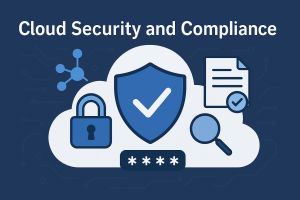Digital transformation can feel like a mountain climb: everyone agrees on the peak, but getting the right gear and plan is the hard part. The secret to bridging the gap between a high-level digital strategy and real-world results lies in product engineering strategy.
It’s the discipline that moves you past “pilot hell” and into continuous, valuable delivery. Ready to stop strategizing and start shipping?
Here are the 5 essential steps your organization must follow to successfully execute digital transformation through a product-first lens.
1. Architect the Vision: Align Strategy with Product Goals
The Mistake: Developing a digital strategy in a silo, separate from the teams that will build the products.
The Fix: Your transformation journey must start with defining clear, measurable product goals that directly support the core business strategy.
- Ask the Big Questions: What are the 3-5 core business capabilities that must be digitized? For example: “Reduce customer onboarding time by 50%” or “Enable real-time supply chain visibility.”
- Identify Value Streams: Map out the end-to-end flow of value and identify the specific digital products (internal or external) needed to realize that value.
- Establish Metrics: Agree on Key Performance Indicators (KPIs) before development starts. If you can’t measure it, you can’t transform it.
2. Build the Engine: Shift to a Product-Centric Culture
The Mistake: Treating digital initiatives as temporary “projects” with a fixed start and end date, disbanding teams upon launch.
The Fix: Embrace a product-centric organizational model where teams have continuous ownership and accountability.
- Empower Autonomous Teams: Create small, cross-functional squads (including designers, engineers, and product managers) dedicated to a single product or value stream. This ensures deep expertise and faster decision-making.
- Embrace Customer Obsession: Place user research and feedback at the heart of the development process. The product manager is the voice of the customer, driving iteration based on real needs, not internal politics.
- Foster a “Build-Measure-Learn” Mindset: Encourage rapid prototyping, testing, and iterating. Failure is a learning opportunity; speed of learning is a competitive advantage.
3. Engineer for Scale: Implement Modern DevOps & Architecture
The Mistake: Using legacy development practices to build the “future” digital platform, leading to technical debt and slow deployment.
The Fix: Adopt best-in-class product engineering practices to ensure speed, quality, and resilience.
- Go Cloud-Native: Design systems using microservices, APIs, and containers for maximum flexibility, scalability, and platform independence.
- Automate Everything (DevOps): Implement Continuous Integration/Continuous Delivery (CI/CD) pipelines. Automation is non-negotiable for high-velocity software delivery.
- Prioritize Security-by-Design: Integrate security testing and compliance checks throughout the development process (DevSecOps), not just as a final audit.
4. Deliver Incrementally: Prioritize the Minimal Viable Product (MVP)
The Mistake: Attempting to build a perfect, fully-featured system in one go, resulting in long cycles and missed market opportunities.
The Fix: Focus on delivering a Minimal Viable Product (MVP) that solves a core customer problem quickly.
- Think Small, Launch Fast: Determine the smallest possible set of features that delivers tangible value and get it into users’ hands.
- Manage the Backlog: The product backlog is a dynamic, living document. Use strategic tools like Redtgs to constantly re-prioritize based on user feedback and changing business needs.
- Risk the Effort: Each successful incremental release builds confidence, captures early returns on investment, and provides crucial data to refine the next iteration.
De-Risking the Transformation with MVPs
Focusing on the MVP is crucial because it allows your team to de-risk the transformation effort. Each successful incremental release builds immediate stakeholder confidence, provides early returns on investment, and, most importantly, provides crucial, real-world data to inform the next iteration. By adopting this iterative approach, you avoid the monumental failure risk of a “big bang” launch and maintain business agility. However, the launch is never the finish line; it is simply the point where real learning begins.
5. Sustain the Momentum: Measure, Optimize, and Evolve
The Mistake: Celebrating the launch as the finish line and allowing the product to stagnate.
The Fix: Recognize that digital transformation is a marathon. Continuous optimization is the new standard.
- Monitor Product Health: Track performance metrics (uptime, latency, error rates) and business metrics (adoption rate, conversion, revenue impact).
- Feed Data Back: Use analytics to identify bottlenecks, friction points in the user journey, and opportunities for new features.
- Invest in Technical Excellence: Dedicate a portion of every sprint to refactoring and reducing technical debt. A healthy codebase is the foundation of sustained agility.
Future-Proofing Your Products: The Pursuit of Sustained Value
The final and most critical step is embedding a culture of continuous optimization. Digital transformation is a marathon, not a sprint, and your product engineering team must be geared for longevity. This involves rigorously tracking two types of metrics: Product Health (e.g., uptime, performance, security) and Business Impact (e.g., user adoption rate, conversion lift, revenue increase). Use this data to identify bottlenecks and friction points in the user journey. Crucially, dedicate a mandatory portion of every development sprint to technical excellence—refactoring code and reducing technical debt. A healthy, modern codebase is the foundation of sustained agility and is the only way to ensure your digital products continue to deliver increasing value long after the initial launch.
By embedding these five principles, product engineering strategy becomes the engine that propels your digital transformation, ensuring your strategy translates into tangible, market-leading digital products.
Conclusion
To successfully navigate digital transformation, organizations must view product engineering not as a cost center, but as the engine of continuous value creation. By rigorously following these five steps—from strategic alignment to cultural shift and finally, to continuous, data-driven optimization—you close the gap between ambition and reality. Embracing a product-centric mindset ensures your business doesn’t just adapt to the future, but actively builds it, delivering innovative, scalable digital solutions that secure market leadership and drive sustainable growth.
Frequently Asked Questions (FAQ)
1. What is the difference between “Product Engineering” and “Software Development”?
Answer: While related, Product Engineering is a broader, holistic discipline. Software Development focuses on the technical creation of the code and the application itself. Product Engineering encompasses the entire lifecycle, including strategic planning, user research, design, development (software development is a part of this), testing, deployment, and continuous iteration and improvement based on market feedback and business goals.
2. Why is a product-centric culture essential for digital transformation?
Answer: A product-centric culture shifts focus from temporary “projects” to continuous “products.” This change ensures teams maintain long-term ownership, which fosters accountability, deeper market understanding, continuous user feedback loops, and a commitment to technical health, leading to sustained value and relevance.
3. What is an MVP, and why is it important in this 5-step process?
Answer: MVP stands for Minimum Viable Product. It is the version of a new product that allows a team to collect the maximum amount of validated learning about customers with the least effort. In the transformation process, launching MVPs quickly de-risks the effort, provides early ROI, and gathers real-world data to strategically inform and prioritize future feature development.
4. How does Product Engineering help with legacy system modernization?
Answer: Product engineering treats the modernization of a legacy system as the creation of a new digital product. It involves strategic analysis of the old system’s core value, using modern architecture (like microservices) to systematically decouple and rebuild functionality, ensuring the new solution is scalable, secure, and resilient while minimizing business disruption.






